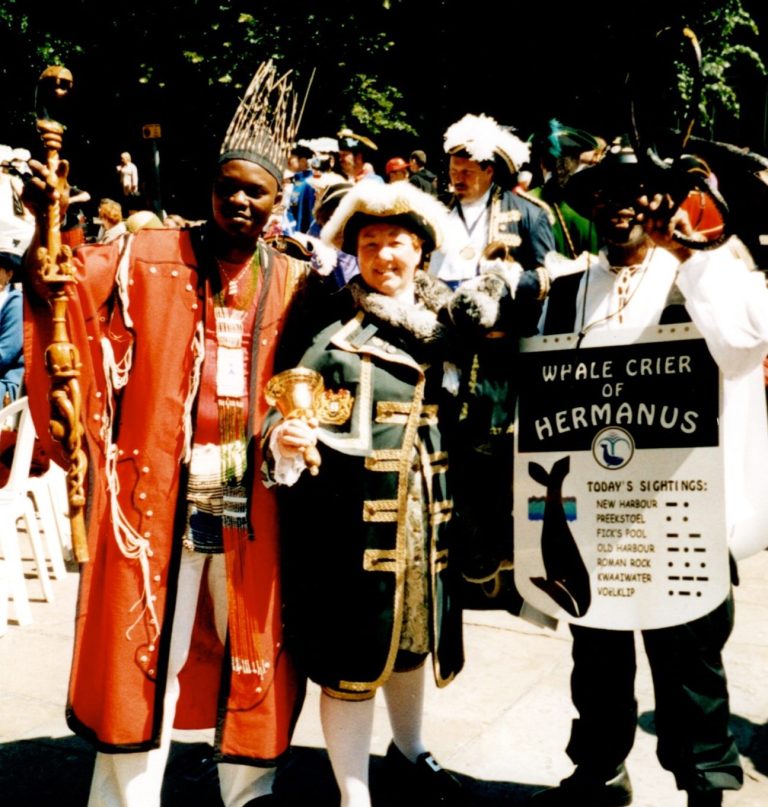History of Town Crying
The first Town Criers or Heralds can be traced back to Ancient Greece around 776BC. They were known as Spartan runners. Mentioned by Homer in the Iliad one famous Greek Warrior called Stentor was thought to have the voice of 50 men which is the origin of the term Stentorian formally used by the Victorians to describe a noisy person.
Town Criers were particularly important when most of the population was illiterate. Although their origin is much older, the position was formalised after the Norman Conquest of 1066.
They are featured on the Bayeux Tapestry showing the death of Edward the Confessor, 2 Town Criers (men with bells) are clearly visible at the bottom of the scene.
As England colonized the world, the position of the town crier spread with it. Before people could read, town criers brought the news to the people, and served as spokesmen for the King.
Usually people of standing in the community were chosen as criers, for they had to be able to write and read the official proclamations. Often they were a husband and wife team with the wife ringing the large hand bell and the husband doing the shouting. The Town crier would read a proclamation, usually at the door of the local inn, then nail it to the doorpost so that those who could read were able to.
The tradition has resulted in the expression “posting a notice” and the naming of newspapers as “The Post”. The first talking newspaper if you will.
Proclaiming the news was not however their only role, their original role was to patrol the streets after dark, acting as peacekeepers, arresting miscreants and taking them to the stocks for punishment and posting their crimes to show why they were there.
It was also their job to make sure fires were damped down for the night after the curfew bell. Using a couvre - feux (Fire cover) where the name comes from. You would often hear the cry 6.00o'clock and all is well and hourly throughout the night.
They had the role of the Town crier at public hangings to read out why the person was being hanged, and then to help cut them down.
The key requirements of the role were the ability to read, a loud voice and an air of authority. Bellmen would be paid for each proclamation they made. In the 18th century the rate was between 2d and 4d per cry.
Town criers were protected by law.“Don’t shoot the messenger” was a very real command. Anything they did was done in the name of the monarch, therefore, to harm a town crier was an act of treason. This was a necessary safeguard as the town criers often had to announce unwelcome news such as tax increases!
Town Criers often start their cries with "Oyez" which is the English version of the Norman French word for "listen". It is this word, repeated 3 times, which invariably starts any proclamation.
It ends with a salutation to the monarch, with the words "God Save the King (or Queen)". This is the call or cry of the town crier, now usually only heard at ceremonials, fetes and local events. It would have been a common cry on the streets of medieval England.
The distinctive clothes worn by a Town Crier are referred to as their livery. Today it is based, often quite loosely, on the clothing worn by a late 18th century coachman.
Typically, a Crier will wear a tricorn or bicorn hat with feathers, greatcoat or frock coat, white shirt with lace cuffs, jabot or stock, waistcoat, breeches, white hose and buckled shoes or plain boots. The feathers are a modern representation of the quills used by earlier Town Criers to write their proclamations.
Most criers use a bell to attract attention, but other implements are sometimes used such as the “Ripon Hornblower” obviously uses a horn. Some use drums, whistles, or rattles. Whatever they use they want to get your attention before they give you the message.
An ancient calling of which I am very proud to be a part of today.






We need your consent to load the translations
We use a third-party service to translate the website content that may collect data about your activity. Please review the details in the privacy policy and accept the service to view the translations.
